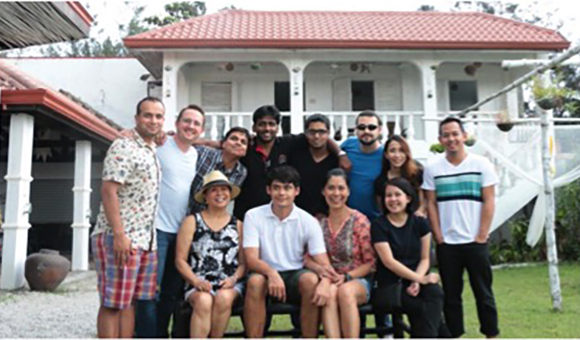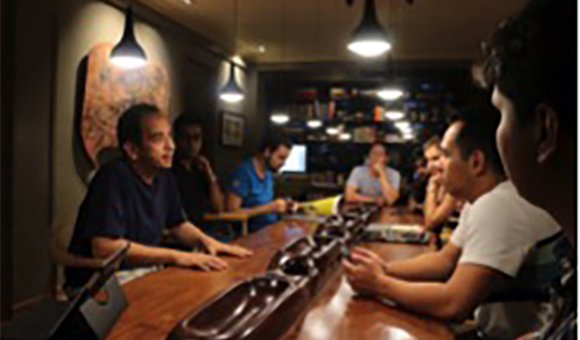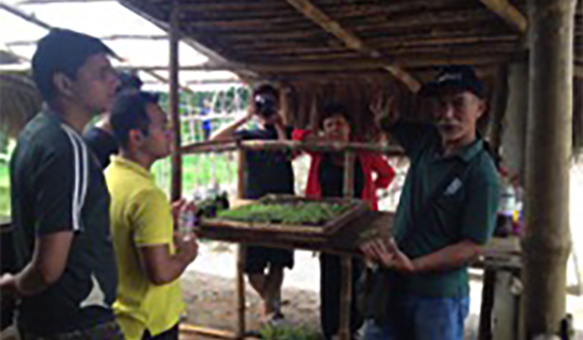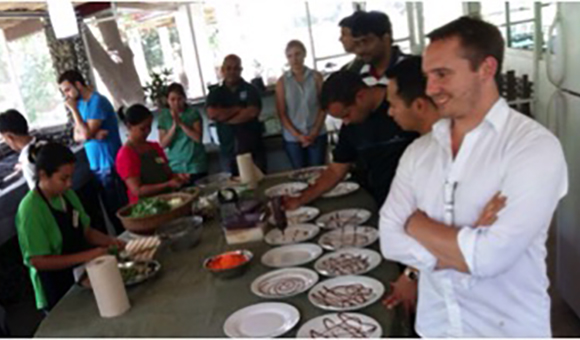Asian Institute of Management Philippines
After the classrooms sessions during the first day of the Global Network Week in the Philippines, it was time to bring what students learned into actual practice. This year, students were taken to Zambawood, San Narciso, Zambales; Casa San Miguel, San Antonio, Zambales; and Mango Grove at Bancal River, Iba, Zambales. Each destination had a lesson to impart to the students.
Day two started with a scenic trip towards Northern Luzon. Rachel Harrison, owner of Zambawood, hosted the students. She shared with the students the story of how Zambawood was established. According to Harrison, it started with a vision to build a haven for special individuals with special needs. The place was inspired by Julyan, Rachel’s son with autism. A farm was even named after him—Julyan’s Pine Beach Farm—that provides tranquility and serves as Julyan’s classroom, where he spends his time with farming activities, growing organic vegetables and raising free-range chickens. The Zambales mountain ranges can be viewed from the farm, and one can feel the sea breeze and smell the countryside. Zambawood’s in-house chefs prepared the farm’s natural produce for the students to enjoy local flavors. What started as a residence for Julyan to enjoy is now evolving into an exceptional place for other people to find inspiration.

The students were also hosted by Alfonso “Coke” Bolipata, world-renowned violinist and cofounder of the Metro Manila Community Orchestra, in Casa San Miguel.
Bolipata shared with the students the story of Casa San Miguel. It started as a school program for underprivileged but artistically inclined children to draw and paint. Eventually, they also offered violin and cello lessons. Now, they have 120 students coming from families of fishermen and carpenters. They have expanded with the help of corporate sponsorships and the profits from their restaurant, the Backstage Café. As the operations become sustainable, they are planning to add an added product offering, a tour of Anawangin, glam ping, wind surfing. They also maintain strong linkage with Citibank, Starbucks, and Globe Telecoms, among others for sponsorships. Moreover, Casa San Miguel does not spend on advertisements. They generate sales mostly from social media promotions.

Day three started with students swimming and kayaking on the pristine waters of Bancal River with the Zambales mountain ranges in the background. After the water activities, classroom sessions were held at Mango Grove at Bancal River. The first resource speaker, Emily Raguindin, community organizer of Iba, discussed the displacement of the Aeta tribe when Mt. Pinatubo erupted in 1991. The Aetas are believed to be the first settlers in the Philippines. Upon resettlement in Jesmag, the Aetas were taught to farming, which became their primary livelihood. With the assistance from the ABS-CBN Lingkod Kapamilya Foundation, Inc. (ALKFI), from 20, there are now 50 families in Jesmag, and ALKFI ensures that at least one member of the household is employed.

The students were also privileged to hear from Gil Carandang. He is considered as the father of organic farming in the Philippines. He shared his experiences in training farmers in the province of Leyte and his work involvements in El Nido. He emphasized that adapting organic and natural farming techniques is a requisite for sustainability. He imparted the use of appropriate technology and microbes in farming. That is, farmers must use natural enzymes and lactobacillus. Likewise, farming with water, earth, and fire must be the rule of nature adapted by farmers.

In addition to Carandang’s lecture, chef Geoffrey Blanchette, owner of RBI Steak House, Angeles City, Pampanga, discussed farm-to-table food preparation. He did a kitchen demo of prepared Asian salad, including plating and presentation. Students gathered ingredients fresh from the farm and prepared their own salads and dressings. Blanchette believes that training in food presentation will spur interest in the culinary arts among the students.

We have seen again the importance of a good linkage among private sector, local government, and non-government organizations in promoting not only sustainable tourism but also social tourism. Here, we have highlighted the need for stakeholders to engage in socially responsible undertakings—pursuing profit maximization together with environmental protection, maximizing tourists' experience, and promoting community benefit.
